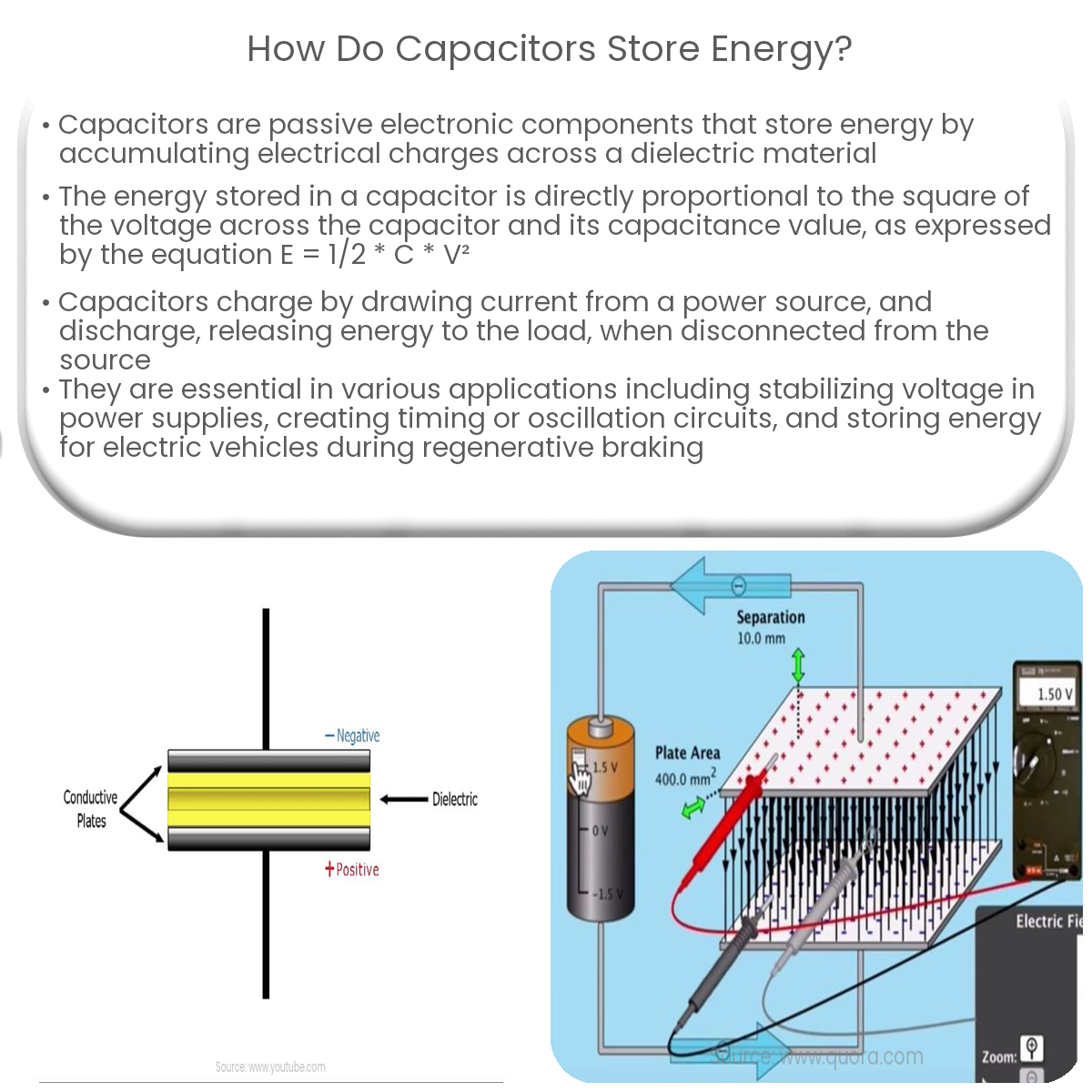Capacitors store energy by accumulating electric charges on conductive plates separated by a dielectric, creating an electric field.
How Do Capacitors Store Energy?
A capacitor is a passive electronic component that stores electrical energy by separating electrical charges across an insulating material, called a dielectric. Capacitors consist of two conductive plates separated by a dielectric, which can be made of various materials such as ceramic, tantalum, or electrolytic.
Charge Storage Mechanism
When a voltage is applied across a capacitor, electric charges accumulate on the conductive plates. Positive charges build up on one plate, while negative charges accumulate on the other. The dielectric material between the plates prevents charges from flowing directly between the plates, which leads to the storage of energy in the electric field created by the charges. The energy stored in the capacitor can be released when the voltage across the capacitor is removed or reduced, allowing the charges to redistribute through the circuit.
Energy Storage Equation
The energy stored in a capacitor is calculated using the following equation:
E = 1/2 * C * V2
Where:
- E represents the energy stored in the capacitor (measured in joules)
- C is the capacitance of the capacitor (measured in farads)
- V is the voltage across the capacitor (measured in volts)
This equation shows that the energy stored in a capacitor is directly proportional to the square of the voltage across the capacitor and the capacitance value.
Capacitor Charging and Discharging
During the charging process, a capacitor draws current from the power source, and the voltage across the capacitor gradually increases until it reaches the source voltage. When the capacitor is disconnected from the power source and connected to a load, it begins to discharge, releasing the stored energy to the load. The voltage across the capacitor decreases during this process, and the current through the load decreases as well.
Applications of Capacitors in Energy Storage
Capacitors play a crucial role in various electronic circuits and applications. Some common uses of capacitors related to energy storage include:
- Energy storage in power supplies: Capacitors can smooth out voltage fluctuations, providing a stable voltage source for sensitive electronic components.
- Timing and oscillation circuits: Capacitors can be used with resistors or inductors to create timing or oscillation circuits, where the charge and discharge cycles determine the frequency of the output signal.
- Energy recovery and storage in electric vehicles: Capacitors can be used to store energy generated during regenerative braking in electric vehicles, which can then be used to power the vehicle during acceleration.


